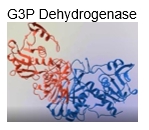The tertiary structure of proteins represents their overall three-dimensional shape, which is crucial for their function. Unlike secondary structures, such as alpha helices and beta sheets, which are stabilized by backbone interactions, tertiary structures are primarily stabilized by interactions between the side chains, or R groups, of amino acids. This means that R groups can interact even if they are not adjacent in the sequence; they can be far apart along the polypeptide chain. The folding of the protein allows these distant R groups to come into proximity, facilitating various interactions that contribute to the stability and functionality of the protein.
In a typical protein structure, you can observe various secondary structures: beta strands and beta sheets are often depicted in red, while alpha helices are shown in green. Additionally, long loops that change the direction of the backbone and beta turns, which are abrupt changes in direction, play significant roles in connecting these secondary structures. Together, these elements contribute to the formation of the tertiary structure, illustrating how secondary structures come together to create a complex, functional protein.
Understanding the specific interactions between R groups is essential for grasping the nuances of tertiary structure. These interactions can include hydrogen bonds, ionic bonds, hydrophobic interactions, and disulfide bridges, all of which are vital for maintaining the protein's shape and stability. As you delve deeper into the study of protein structures, practicing these concepts will enhance your comprehension of how proteins achieve their functional forms.



